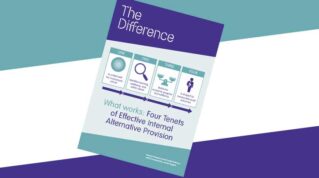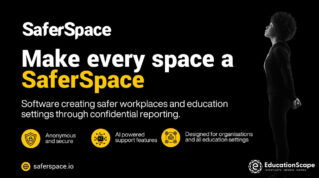‘Nothing about us, without us’ is our guiding principle in the development of inclusive trauma-informed practice (TIP) to support neurodiverse pupils and those with social, emotional and mental health (SEMH) needs. Listening to the voices of those who have lived experience of trauma is pivotal to effective inclusive and informed policy, procedure and strategy.
Behaviour is communication, but behaviour is just the tip of the iceberg. When you are witnessing behaviour you find challenging, what is it actually saying? It might be testing whether the environment is safe, and the child feels loved and important within it. It might be expressing an unmet physical need – for food, sleep or comfort. And it might simply be that this child cannot communicate any other way.
Taking the time to understand how children have learned to manage and survive early trauma gives us clues to their underlying needs. Asking the question ‘why’ about a behaviour can enable us to delve deeper and see the rest of the iceberg below the surface.
Seeing is not believing
Language has the power to place blame on individuals and further reinforce a negative self-concept – ‘I’m bad and unlovable’ – as opposed to thinking about the wider context to find solutions.
When we see behaviour we may think of as ‘vile’, could this child have learned thatthis was their only way to get their needs met? When a young person is ‘kicking off again’, could it be thatthey are in survival mode – needing us to see, hear and respond to them? When we think behaviour is ‘attention-seeking’, could we be seeing someone in fight/flight/freeze mode, distressed, overwhelmed and unable to manage?
TIP top tips for language use
The following top tips were created with the direct participation of our Lived Experience Expert Board (LEE Board).
Use person-first language
A child’s experience of trauma is only one part of their identity and does not define them. Place the individual before their trauma – ‘a person who has experienced trauma’ rather than ‘a trauma survivor’.
Avoid blame
Focus on empathy and support. Rather than saying, ‘What’s wrong with you?’, ask ‘How can I help you?’ This validates their feelings and experiences, while emphasising your willingness to support them.
Separate the problem from the child
Use descriptors to externalise the problem, such as ‘the bad feeling’. This reducesshame and encourages reflection and exploration of newperspectives: ‘When doyou notice the bad feeling?’ ‘Tell me moreabout the bad feeling.’
Provide choice
Trauma experiences can feel very unpredictable and out of control. Presenting options empowers the child and promotes a sense of agency by allowing them to choose what feels most comfortable for them.
Non-verbal communication
Research suggests that 70 per cent of more of the impact of communication can be attributed to non-verbal cues. Those with lived experience of trauma are even more astute to possible signs of danger, so it’s crucial to be attuned to body language, facial expressions and gesture.
To help create a sense of safety, maintain an open and non-threatening body posture, be aware of physical distance and boundaries, and adopt a kind facial expression. Using ‘PACE’ (playfulness, acceptance, curiosity and empathy) and ensuring individuals feel heard are key.
Using the ‘right’ words and language is not straightforward. Even if we mean well, we can say words that might be experienced as insensitive or even offensive. Language and terminology are always evolving in response to experience, culture and society. Below are some suggestions for important strengths-based language changes from previous ‘labels’ that have negative connotations:
- Attention seeking: needing comfort/attachment; connection seeking; need to feel seen.
- Defiant/oppositional: finding it hard to trust others; needing to be in control.
- Challenging behaviour/dysregulation/negative behaviour: behaviour as communication; behaviour adults find challenging to support; or describe the specific behaviour exhibited.
- Manipulative/controlling others: needing to be in control to feel safe; fearful of relationships. It is important to remember this is also a trauma response.
- Liar/lying: protecting themselves from shame; fearful of telling the truth.
And remember, working with trauma also impacts us on numerous levels.












Relational and Restorative approaches, including the use of non-violent communication, really support the use of trauma informed approaches. The role of the safe and trusted adult is also key to enabling children and young people who have experienced trauma to feel psychologically safe, and therefore able to learn.